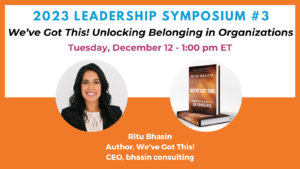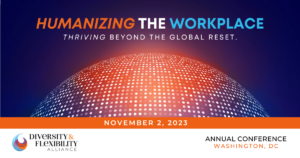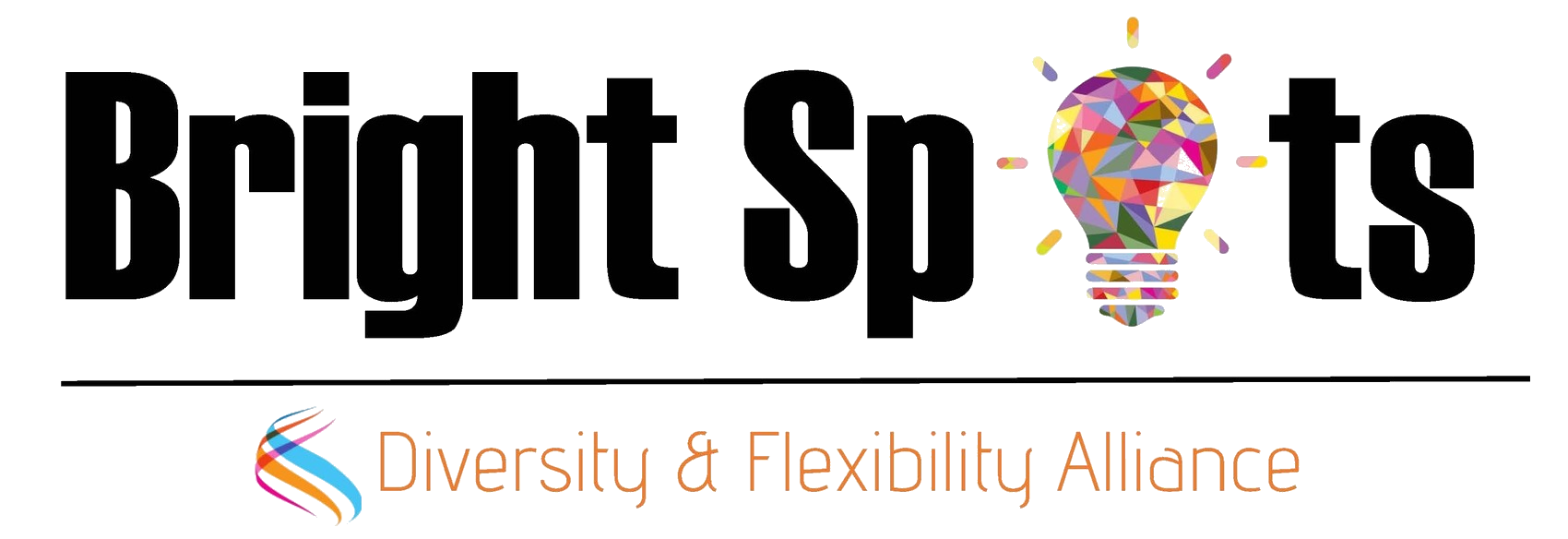As we come to the end of our tenth year of thought leadership, community, and collaboration the Diversity & Flexibility Alliance team is celebrating how far we’ve come. We sat down with Alliance Founder, President & CEO, Manar Morales to discuss workplace highlights since 2012 and her vision for the future. Read our full Ten Year Anniversary Report HERE.
- When you began this journey, what was your vision for the future of diversity and flexibility in the workplace?
When I launched the Alliance in July 2012 my vision was to create an organization that could advise firms on a new approach to working in which anyone who wanted to stay in the workforce would be successful. I wanted to show the industry a broader view of how work gets done and that there really can be a place for everyone. This vision was born out of my own personal experience when I wanted to continue to work as an attorney with scaled back hours while my children were young. I truly believe that no one should be pushed out of the workforce because they don’t fit the traditional mold. My goal was also to show organizations the importance of having diversity in leadership, and the intersection between flexibility and diversity. I want organizations to strive for a workplace where everyone’s experiences are the same and everyone feels valued, seen and heard.
- In 2012, what was your biggest challenge when working with members?
I think our biggest challenge in 2012 was convincing law firm leaders that flexible work actually works. They’d say, “This is great, but it’s not going to work in the legal industry.” Our challenge was to prove that there are lots of different ways people can work, contribute, and achieve, and that flexibility can play a very positive role in the success of the organization. We tried to encourage law firms to “Bridge the Gap” between what their flexibility policy said and what they were actually doing. The biggest challenge to us at that time was the status quo – “This is the way it’s always been done.” The silver lining of COVID was that it took away the status quo. People were forced to work this way and they could see it working at scale. The status quo is no longer a barrier.
- How has that challenge evolved and what’s the biggest challenge in 2023?
The same way 9/11 forever changed how we travel, COVID has forever changed how we work. It has changed people’s expectations of where and when employees work and, for the first time, organizational leaders had to pay attention to what was happening in people’s lives. During COVID, there had to be an alignment between people’s personal and professional lives. For the first time in history, we also have five generations in the workplace at once. The culture in the workplace now is focused on keeping people happy. Top performers have a choice of where to work and if you want to retain them you must keep them happy and offer some sort of flexibility.
- What trend has had the most impact on the workplace in the last ten years?
I think the trend that has had the most significant impact on the workplace is the shift to hybrid that came hand-in-hand with COVID. The silver lining of the pandemic is that leaders had to start paying attention to flexibility and playing a significant role in developing their organizations’ flexible work policies. More leaders are being brought into the conversation than ever before. I used to have conversations with talent and HR professionals, now leaders of the organization are listening. Flexibility has become integral to the success of companies and firms.
- How have leave policies evolved over the past ten years?
Companies and firms are finally beginning to understand the importance of removing primary and secondary caregiver designations in leave policies. If you want to get more women into leadership, you have to have more opportunities for men to be involved in caregiving. By removing gender designations, both men and women can take caregiver leave when having or adopting a child. Other programs like paid off-ramping and on-ramping before and after a leave are also low-cost benefits that have a powerful impact on retaining talent.
- What is the most memorable “Aha moment” you’ve had with members?
The most memorable “Aha moments” are when the conversation on flexibility shifts from it being a detriment to the organization, to the member visualizing flexibility as a driver of talent, diversity, productivity, and profitability. I always try to encourage leaders to reframe how they are seeing flexibility and to imagine the benefits it can bring to an organization’s all-around success. I tell our members, “We can’t promise that you’re going to do everything we recommend, but we can promise you’ll be asking the right questions.”
- Where have you seen the greatest impact on a member’s organizational culture?
I think the greatest impact that we have had on our members is when we can get them to open up completely about their challenges and fears related to flexibility. A shift in mindset and culture can only occur after an honest conversation around where they are and where they need to be. Once their mindset evolves, leaders are often ready to look at their policies in a new light and intentionally modify their behaviors and practices to ensure success. It’s this ripple effect that builds greater success. Organizational culture can only be transformed once people, principles, policies and practices are all aligned.
- You have always said that there is an intersection between diversity and flexibility. How has that become even more clear in 2023?
When I founded the Alliance, one of my goals was to demonstrate the intersection between diversity and flexibility. While we’ve always said that for an initiative to be inclusive you have to de-gender, de-stigmatize and de-parent flexibility, it is also very clear that women and caregivers benefit the most from flexibility. Not only did the pandemic prove that everyone wants and needs flexibility, it also highlighted the connection between diversity and flexibility. As McKinsey reported, when polled, more women and diverse individuals will choose to work flexible schedules than other individuals. Organizations that value diversity must offer flexible working options while also committing to a greater focus on inclusion and engagement for all employees.
- What do you see as the biggest hurdles for the future of work?
The biggest hurdle moving forward is that organizations are not fully embracing how much change – both in their cultures and their day-to-day practices – needs to happen for their hybrid polices to work. Hybrid policies work by design, not by default. There needs to be a total shift in mindset and behavior. For a hybrid working initiative to be successful, organizational leaders have the responsibility to create the practices and shift expectations on how to make this work. Individuals must commit to shifting their behaviors to support mentoring, talent development, collaboration and connection in the hybrid workplace. Culture will only change once everyone commits to embracing new behaviors.
- What is your vision for the workplace ten years from now?
The workplace in ten years will no longer necessarily be tied to a location. Work will be a thing we do, not a place we go. There will always be a need for some in-person, human connection, but there will be more intentionality behind it. Technology will continue to take on a huge role in the evolution of the workplace and make it easier for us to connect when we are not in the same room. I’m hopeful that the workplace of 2033 will be more humanized and people’s private lives will blend more seamlessly with their professional lives.
Read our full Tenth Anniversary Report HERE.


 We are thrilled to announce
We are thrilled to announce 

 Join us on November 2, along with prominent thought leaders from around the world committed to strategically addressing the future of the workplace! Our 2023 Annual Conference will focus on the rapidly changing global workplace and how organizations can thrive by meeting the needs of their people in this ever-evolving environment!
Join us on November 2, along with prominent thought leaders from around the world committed to strategically addressing the future of the workplace! Our 2023 Annual Conference will focus on the rapidly changing global workplace and how organizations can thrive by meeting the needs of their people in this ever-evolving environment!  Members – please join us for two upcoming
Members – please join us for two upcoming 